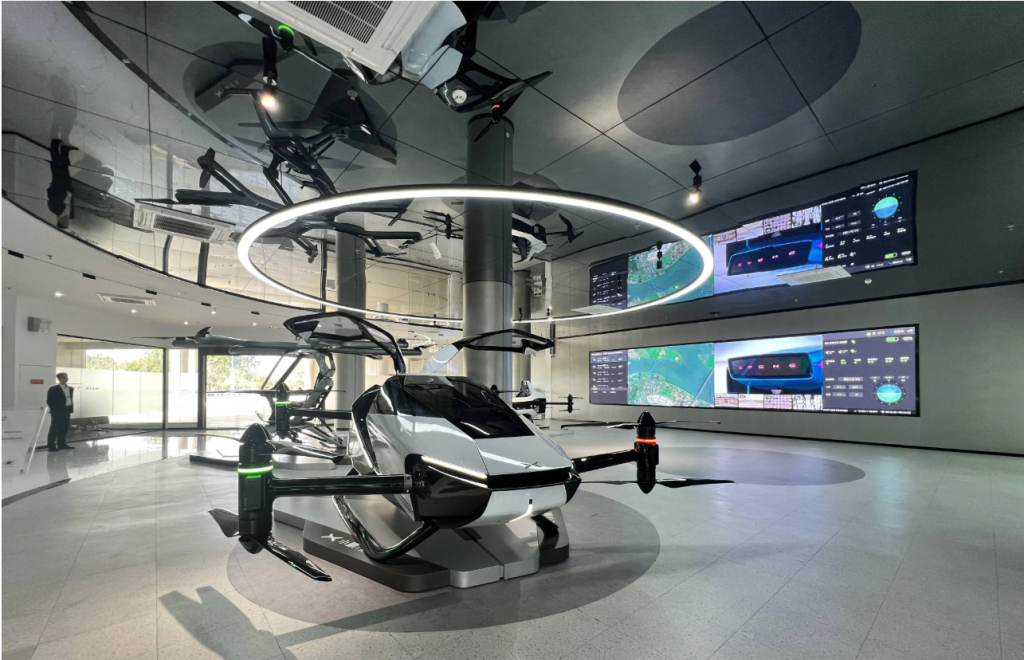Low-Altitude Airspace Management and Drone Flight Safety
1. Introduction: The Growing Importance of Low-Altitude Airspace Management
As the low-altitude economy continues to develop, the safe and efficient management of low-altitude airspace has become a crucial challenge. With the increasing deployment of drone delivery services, urban air mobility (UAM), and unmanned aerial vehicles (UAVs) for various applications, ensuring airspace safety, traffic coordination, and regulatory compliance is essential.

This article explores the key aspects of low-altitude airspace management, the role of graphene technology in improving drone safety, and the strategies to integrate autonomous UAVs into controlled airspace environments.
2. Challenges in Low-Altitude Airspace Management
The widespread use of drones presents several challenges in airspace regulation and flight safety, including:
(1) Air Traffic Congestion and Collision Risks
- Increased drone activity leads to higher risks of mid-air collisions, especially in urban environments.
- Lack of real-time traffic management systems makes it difficult to coordinate multiple UAVs in shared airspace.
(2) Communication and Navigation Issues
- GPS-based navigation is prone to interference and signal loss, affecting flight stability.
- Lack of a standardized unmanned traffic management (UTM) system increases operational uncertainties.
(3) Cybersecurity Threats and Unauthorized Drone Operations
- Unauthorized drone flights pose security threats to public and private infrastructure.
- Risk of cyber-attacks on drone networks could lead to flight disruptions or malicious control takeover.
(4) Regulatory and Compliance Gaps
- Many regions lack comprehensive drone traffic regulations.
- The absence of real-time drone identification and monitoring complicates enforcement.
3. The Role of Graphene in Enhancing Drone Flight Safety
Graphene, known for its exceptional strength, conductivity, and lightweight properties, plays a crucial role in enhancing drone safety and performance.
(1) Graphene Batteries for Stable and Long-Lasting Flights
- Extended Flight Time: Higher energy density provides longer operational endurance.
- Faster Charging: Graphene batteries reduce downtime and improve fleet efficiency.
- Improved Safety: Enhanced thermal stability prevents overheating and battery failure.
(2) Graphene-Based Smart Sensors for Real-Time Airspace Awareness
- Ultra-sensitive graphene sensors improve altitude detection and wind resistance.
- Real-time environmental data collection enables better flight adjustments.
- Enhanced obstacle detection and collision avoidance improve UAV navigation.
(3) Graphene Composites for Stronger and Lighter Drone Frames
- 30% weight reduction increases energy efficiency.
- 200x higher tensile strength improves crash resistance and longevity.
- Better aerodynamics enhance flight control in varying weather conditions.
4. Strategies for Safe and Efficient Drone Flight Operations
To ensure safe drone operations, integrating graphene-enhanced technologies with advanced airspace management systems is key. Key strategies include:
(1) Implementing Unmanned Traffic Management (UTM) Systems
- Real-time drone tracking and geofencing to prevent unauthorized flights.
- Integration of AI-driven air traffic control for seamless UAV coordination.
- Collaborative frameworks between government agencies and private operators.
(2) Strengthening Regulatory Frameworks and Compliance
- Governments must define low-altitude airspace zones for drones.
- Establishing drone registration and Remote ID systems for better monitoring.
- Enforcing airspace restrictions near critical infrastructure and airports.
(3) Enhancing Drone Autonomy with AI and IoT
- AI-powered collision avoidance systems improve real-time flight decision-making.
- IoT integration enables smart airspace mapping and predictive analytics.
- Blockchain-based security protocols prevent unauthorized drone control.
5. Future Outlook: A Safer and More Connected Low-Altitude Airspace
As drone adoption expands, a well-regulated and technologically advanced low-altitude airspace will become essential. Key developments shaping the future include:
🚀 Next-Generation Graphene Batteries: Enabling all-day drone operations with minimal charging.
📡 AI-Driven Air Traffic Control: Coordinating UAV movements for safer urban airspaces.
🔐 Advanced Drone Security Protocols: Preventing cyber threats and unauthorized access.
By integrating graphene-powered drones, AI-driven navigation, and comprehensive airspace regulations, the low-altitude economy will flourish in a safe, efficient, and sustainable manner.
📢 Want to learn more about how graphene is revolutionizing drone flight safety? Contact us today!

